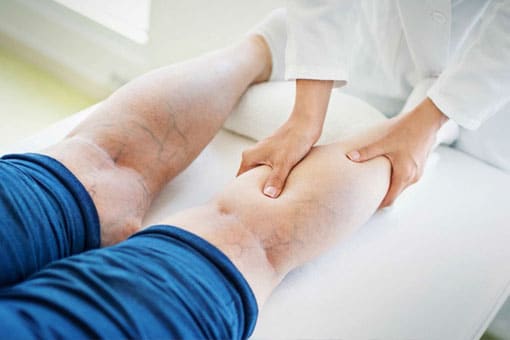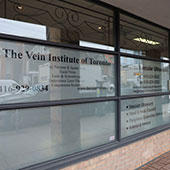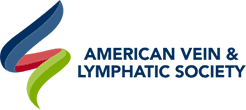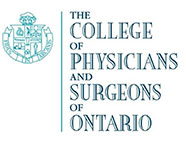FAQ
Frequently Asked Questions
Questions and Answers about Varicose Veins and Venous Insufficiency
What is venous insufficiency?
What are varicose veins?
What are the symptoms of varicose veins or venous insufficiency?
People who have venous insufficiency can have symptoms even without visible varicose veins. The symptoms are caused by pressure on nerves by dilated veins.
How common is venous disease and varicose veins?
People without visible varicose veins can still have symptoms. The symptoms can arise from spider veins, as well as from varicose veins because, in both cases, the symptoms are caused by pressure on nerves by dilated veins.
Heredity is the number one contributing factor causing varicose and spider veins. Women are more likely to suffer from abnormal leg veins. Hormonal factors, including puberty, pregnancy, menopause, the use of birth control pills, estrogen, and progesterone, affect the disease. It is very common for pregnant women to develop varicose veins during the first trimester. Pregnancy causes increases in hormone levels and blood volume which in turn cause veins to enlarge. In addition, the enlarged uterus causes increased pressure on the veins. Varicose veins due to pregnancy often improve within 3 months after delivery. However, with successive pregnancies, abnormal veins are more likely to remain. Other predisposing factors include aging, standing occupations, obesity and leg injury.
Who is at risk of varicose veins?
Risk factors include age, family history, female gender, and pregnancy. In women, pregnancy, especially multiple pregnancies, is one of the most common factors accelerating the worsening of the varicose veins.
How is venous insufficiency diagnosed?
What is the vein ablation treatment?
Reflux within the great saphenous vein leads to pooling in the visible varicose veins below. By closing the great saphenous vein, the twisted and varicosed branch veins, which are close to the skin, shrink and improve in appearance. Once the diseased vein is closed, other healthy veins take over to carry blood from the leg, re-establishing normal flow.
What are the benefits to vein ablation?
Traditionally, surgical ligation or vein stripping was the treatment for varicose veins, but these procedures can be quite painful and often have a long recovery time. In addition, there are high rates of recurrence with the surgical procedures, on average 10 to 25%.
How successful is the vein ablation?
Are there other treatments for varicose veins?
Injection sclerotherapy can be used to treat some varicose and spider veins. An extremely fine needle is used to inject the vein with a solution which shrinks the vein. This is often done after vein ablation to improve the appearance of any remaining spider veins.
What is an interventional radiologist?
Is treatment always required?
How long does a consultation take?
Does sclerotherapy hurt?
How many sclerotherapy treatments will I need?
What are the side effects of sclerotherapy?
How long will the results last?
How long will the results last?
Questions and Answers about Deep Vein Thrombosis
What is deep Vein Thrombosis (DVT)?
How does a DVT form?
What are the risk factors for DVT?
What are the typical symptoms of DVT?
Q How is DVT treated?
DVT is treated with blood thinners to prevent pulmonary embolism and to prevent further clot formation. In patients with extensive DVT, an additional treatment option is catheter-directed thrombolysis. In patients who cannot receive blood thinners or in whom blood thinners have failed to prevent further clot formation, an additional treatment option is the placement of an inferior vena cava filter.
Catheter-Directed Thrombolysis
Catheter-directed thrombolysis is performed under imaging guidance by an interventional radiologists. This procedure is designed to rapidly break up the clot, restore blood flow within the vein, and potentially preserve valve function to minimize the risk and severity of post-thrombotic syndrome. Using imaging guidance, the interventional radiologist inserts a catheter into a leg vein behind the knee and threads it into the vein containing the clot. A clot-dissolving drug is infused through the catheter directly into the clot and repeated over one to two days. The fresher the clot, the faster it dissolves. A venogram is repeated to demonstrate that the clot has dissolved, and to detect any narrowing in the vein that might lead to future clot formation. If vein narrowing is present, the interventional radiologist can treat it using balloon angioplasty or by placing a stent.
Vena Cava Filter
In patients in whom catheter-directed thrombolysis and blood thinners are not medically appropriate, an interventional radiologist can insert a small filtering device into the large vein that drains the legs (the inferior vena cava) under imaging guidance. This vena cava “filter” functions like a catcher’s mitt to capture blood clots that break off.
What problems does DVT cause?
DVT is life threatening and can cause permanent damage to your leg:
Pulmonary Embolism
When DVT is left untreated, a piece of clot can break off and travel through circulation to the lungs; this is known as “pulmonary embolism”. The clot can interfere with the lung’s ability to provide oxygen to the body and, in severe cases, can cause heart failure and/or death. With early treatment using blood thinners, people with DVT can reduce their chances of developing a life-threatening pulmonary embolism to less than 1%.
Post-Thrombotic Syndrome
Post-thrombotic syndrome is an under-recognized but common long-term consequence of DVT. When DVT is treated with blood thinners alone, the blood clot is not actively dissolved. Rather, the blood thinners prevent new clots from forming, but the already present clot remains in the leg. The body may eventually fully or partially dissolve the clot, but the vein valves often become damaged in the meantime. The continued vein blockage and valve damage cause abnormal pooling of blood in the leg, which can cause the post-thrombotic syndrome. Patients with the post-thrombotic syndrome often experience chronic leg pain or heaviness, swelling, difficulty walking, changes in the skin color and texture, and, in severe cases, skin ulcers (sores). These symptoms may develop within several months or years. Unfortunately, these problems occur to some degree in as many as 60 to 70% of people with DVT.

Book A Free (OHIP Covered) Vein Consultation Today!
If you have OHIP coverage, you qualify for a FREE Venous consultation. A private consultation is the best way for our medical team to evaluate your varicose vein, spider vein, hand vein or facial vein condition. It also provides you with the opportunity to get your questions answered and address any other concerns you may have. Book your consultation today!

HOURS OF OPERATION
Monday: 9:00 am - 7:00 pm
Tuesday: 9:30 am - 4:30 pm
Wednesday: 9:00 am - 5:00 pm
Thursday: 7:00 am - 4:00 pm
Friday: 9:30 am - 3:00 pm
Saturday: Schedule varies
Sunday: Closed






